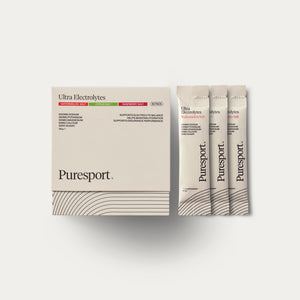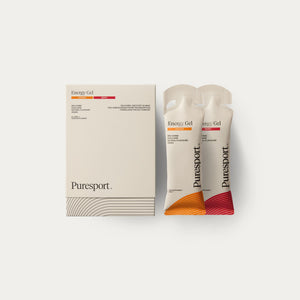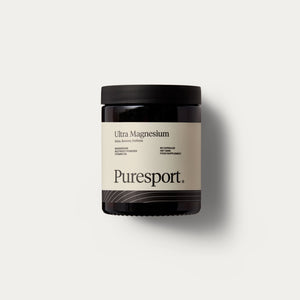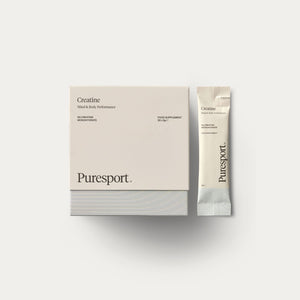When To Take Energy Gels During Your Half Marathon or Marathon
Energy gels are a core tool for endurance runners, developed to deliver fast-absorbed carbohydrates that fuel your performance late into a race. They help replenish your body’s limited glycogen stores, stave off energy dips, and promote steady pacing. For half marathons and marathons in particular, strategising when and how many gels to take can be the key to hitting your goals and avoiding “the wall.”
Understanding Energy Gels and Their Role
Energy gels typically contain simple sugars such as glucose, maltodextrin, or fructose designed for rapid digestion during exercise, often blended with electrolytes and sometimes caffeine for added effect. Their role is to provide a concentrated, portable energy source for runners and athletes engaged in prolonged or high-intensity efforts, especially as muscle glycogen depletes after around 90 minutes of steady exercise.
How Many Energy Gels for a Half Marathon?
When to Start Taking Gels
- Most guidance suggests taking your first energy gel around 40-45 minutes into your half marathon.
- Continue taking a gel every 30-40 minutes afterwards for consistent energy.
How Many Gels is “Typical” for a Half Marathon?
- 2–4 gels during a half marathon is typical for most runners, depending on pace and finish time.
- Faster runners may only need two, those finishing around two hours may benefit from three to four gels to maintain carbohydrate intake.
Sample gel strategy for a 2-hour half marathon:
- Start: 0:00
- 1st gel: 00:40
- 2nd gel: 01:20
- Optional 3rd gel: 01:50 (for runners closer to 2 hours)
- Aim for 30–60g of carbohydrates per hour from gels and other sources (check label for carbs per gel, most contain 20–30g).
How Many Energy Gels for Full Marathons?
- The typical recommendation is 2–3 gels per hour during your marathon, starting from around 20–30 minutes in and repeating every 30–40 minutes thereafter.
- For a 4-hour marathon, that equates to 8–12 gels; for a 5-hour marathon, up to 15 gels may be reasonable at the upper end.
See our full range of recommended marathon supplements here or our new energy gels here.
To aid your half marathon and marathon training too, discover our marathon training plans to help you achieve your personal best.
Shop Energy Gels
Fuelling made simple. One gel, every 30 minutes. 30g of dual-source carbs in Berry & Orange flavours. In 6, 12 & 24 Packs.
$4.35 per serving
Fuelling made simple. One gel, every 30 minutes. 30g of dual-source carbs in smooth, Orange flavour. In 6, 12 & 24 Packs.
$4.35 per serving
Fuelling made simple. One gel, every 30 minutes. 30g of dual-source carbs in smooth, Berry flavour. In in 6, 12 & 24 Packs.
$4.35 per serving
Keep fuelling and hydrating simple. Energy Gels Variety 6-Pack and Ultra Electrolytes Variety 15-Pack.
$2.74 per serving
Overconsumption Risks
- Taking gels “just in case” or doubling up won’t double your energy—in fact, it can result in an energy crash and gastrointestinal distress, including cramps, nausea, or diarrhea.
- Overuse also increases dental risks (due to high sugar and acidity) if not followed with water/rinsing.
Gels and Shorter Runs (5K/10K)
- Gels are rarely needed for runs lasting under an hour (most 5K/10K events)—your body’s stored energy is typically sufficient.
- Gels can be used for slower 10Ks or if you are experimenting with longer effort, but your digestive system may not have enough time to process them for a performance boost.
- For these short runs, hydration and electrolytes are more important. Reserve gels for when you’re training/racing at 60–90 minutes or more.
Explore electrolytes, which come in single use sachets and perfect for those shorter distance runs.
Practicing Your Energy Gel Strategy
Practice your gel strategy on training runs to see what your stomach tolerates, how soon you feel a benefit, and what flavors/textures work for you. Never experiment with a new gel or new timing on race day—always use your training to fine-tune what feels best. Try to take gels with water, not sports drink, to aid absorption and minimize digestive upset.
Key Takeaways
- Start your first gel 40-45 minutes in for a half marathon; repeat every 30–40 minutes.
- 2–4 gels for most half marathoners; 8–12 gels for marathoners finishing in 4 hours.
- Avoid doubling up; more is not better and can backfire.
- Gels aren’t needed for most runs under 1 hour — focus on hydration instead.
- Practice your plan in training for best results on race day.
With the right plan, energy gels are a powerful tool to help you run fast and finish strong through your next half or full marathon.
Reach your goals
30 sachets of our high performance electrolyte formula with 1000mg sodium. 10 sachets of each flavour.
$1.59 per serving
Fuelling made simple. One gel, every 30 minutes. 30g of dual-source carbs in Berry & Orange flavours. In 6, 12 & 24 Packs.
$4.35 per serving
30 x 5g servings, designed to enhance energy production, muscular endurance, and recovery.
$1.21 per serving
Boost your VO2 max and endurance with this functional mushroom crafted to elevate cardiovascular fitness.
$1.68 per day


































































































































2 comments
Gels are in production I think. @ben_is_running leaked
How come you guys don’t sell energy gels? Is the profit margin not that great or the process of making them more complicated?